The REMHI division conducts research and provides services related to local climate change and impact assessment, as well as support for defining adaptation actions and climate risk management. The division comprises four units, each with a specific focus:
- The REM unit at CMCC develops regional-scale climate models and limited-area atmospheric models, actively contributing to the development of COSMO and ICON models since 2006 through participation in the COSMO Community and the CLM Assembly. In particular, it focuses on the development of convection-permitting models and the implementation of urban dynamics within these models, which are crucial for accurately simulating extreme events that are becoming increasingly frequent and intense due to climate change. REM also integrates statistical and AI-based downscaling techniques, such as super-resolution GAN. REM collaborates in various national and international research projects and programs (EURO-CORDEX, MENA-CORDEX, CORDEX Flagship) to improve atmospheric forecasts and climate scenarios at local scale.
- The Adaptation Engineering Unit is a multidisciplinary group whose mission is to modernize and improve the traditional civil engineering approaches to tackle the challenges posed by climate change and leverage its potential opportunities. The unit covers the main domains of the sector: hydrology and hydraulics, geotechnics, and construction technology.
- The Climate Service (CS) Unit develops downstream climate information services to support customised decision-making, facilitating connections between climate data and climate-related impacts on relevant sectors, thus supporting climate risk assessments in key areas and the definition of adaptation strategies. CS also provides very-high-resolution climate data through innovative data-driven downscaling methods based on bias correction techniques and artificial intelligence. Through co-design and capacity-building approaches, CS integrates new methodologies and knowledge to create specific digital twins. The information is accessible via the DATACLIME platform (www.dataclime.com), fully developed by the CS unit.
- The Urban Risk and Adaptation unit develops and applies frameworks for evaluating climate risks and advancing knowledge on planning, designing, and managing adaptation solutions in urban settings. It focuses on resilience across various scales within built environment, integrating interdisciplinary expertise, local insights, and participatory methods to foster behavioural changes and social acceptance.
REMHI Projects
In the framework of impacts related to climate change, water stock management…
AdriaClimPlus project aims at developing a shared framework for advancing knowledge and…
REMHI Publications
Climate change and soil erosion dynamics
Latella M., Rianna G., Padulano R.; Giugliano G., Santini M.
2024, Advanced Tools for Studying Soil Erosion Processes: Erosion Modelling, Soil Redistribution Rates, Advanced Analysis, and Artificial Intelligence, Pages 181 - 197, doi: 10.1016/B978-0-443-22262-7.00026-6
Published articles
Effects of Wooden Embers Cover on thermo-hydrological response of silty volcanic cover and implications to post-wildfire slope stability
Coppola L.; Reder A., Rianna G., Tarantino A.; Pagano L.
2024, Engineering Geology, Volume 341 - 107724, doi: 10.1016/j.enggeo.2024.107724
Published articles
Latest News
A substantial part of international trade goes through shipping routes, which has made it a challenging sector to decarbonize. A new study involving CMCC researchers identifies potential pathways for decarbonizing global shipping with low carbon fuels.
Studying the wave climate of a region is crucial for various socio-economic activities such as shipping, coastal infrastructure planning, and environmental conservation efforts. A new study led by CMCC contributes to a better understanding of the spatiotemporal variability of wave fields in the Black Sea region.
150 participants, half of whom are under 40, 135 studies presented, experts from 19 countries, and 3 plenary sessions featuring top experts in the field: the climate science community gathered in Lecce, Italy, to showcase the latest research on Mediterranean climate.
What is the role of decreasing river runoff in future Adriatic water stratification and sea level rise? A new study, led by CMCC researcher Giorgia Verri, uses a climate downscaling approach to predict the Adriatic water cycle up to 2050 in what is one of the first attempts to provide a comprehensive and high-resolution climate modelling of the basin’s coastal water cycle.
Research Units
Research Unit Leader
Mario Raffa
The REM unit of the CMCC develops and utilizes various downscaling tools, both physical model-based and statistical, to provide detailed and customized climate analyses in different global contexts. Thanks to its strategic participation in numerous European, international, and national research projects and programs, REM has played a recognized role for many years in the development of regional climate models and limited-area atmospheric models. Specifically, since 2006, REM has been involved in the development of the COSMO and ICON models, actively collaborating within the COSMO Community and the CLM Assembly. REM’s established expertise enables the conduction of high-resolution climate simulations, essential for assessing the local impacts of climate change and for formulating adaptation strategies based on solid scientific evidence. For this purpose, REM works closely with the URA (Urban Risk and Adaptation) and AE (Adaptation Engineering) units within the REMHI division, guiding the development of downscaling techniques on these strategic themes. REM is at the forefront of developing convection-permitting models and defining advanced parameterizations for urban dynamics, maintaining constant cooperation with the international scientific community. Moreover, the development of these models is critical for improving the ability to describe and predict extreme events, such as heat waves and intense rainfall, which are becoming increasingly frequent and intense due to climate change. In this context, REM collaborates with the CS (Climate Service) unit of REMHI to further enhance the use of satellite data in the development of ultra-high-resolution downscaling techniques. Key areas of research for the unit include studies on convective events (CPM), dynamic land use (LUCAS), and urban dynamics (URB-RCC), particularly developed within the Flagship CORDEX framework. Another strength of the unit is its ability to operate on state-of-the-art computing systems, using both CPUs and GPUs to optimize model performance and accelerate simulation processes. This multi-system approach allows REM to tackle complex computational challenges and manage large volumes of data in reduced times, ensuring the accuracy and timeliness of its analyses. REM is also active in the development of statistical downscaling techniques and AI-based solutions, such as super-resolution GAN, to complement and further enhance physical model-based downscaling. With a role in the EURO-CORDEX and MENA-CORDEX programs, REM is solidifying itself as a unit capable of contributing to the development of tools for improving atmospheric forecasts and climate scenarios.
Research Unit Leader
Giuliana Barbato
The Climate Service (CS) Unit addresses the challenges of climate change by building bridges between the research community and end users through the synthesis of data from Regional Climate Models (RCMs) and Earth observations (EO) into useful information for quantifying hazard components within climate change risk analysis approaches in key sectors such as energy, infrastructure, and water, developed in collaboration with the Adaptation Engineering (AE) and Urban Risk and Adaptation (URA) units. In collaboration with the Regional Model (REM) unit, CS contributes to providing very-high spatial resolution climate data by applying “data-driven” downscaling methods based on statistical approaches and ML/AI techniques. The unit’s mission is to downstream climate information to offer customised support to end users, creating connections between climate data and potential climate-related impacts on different sectors, thus generating information that supports decision-making processes. This goal is achieved through participatory co-design and capacity-building approaches and continuous updates that enable the unit to evolve with scientific advancements, integrating new climate products, cutting-edge knowledge, and methodologies to build specific digital twins. All this information is made accessible through the DATACLIME platform (www.dataclime.com), an integrated resource that has been a reference for researchers, consultants, businesses, and policymakers for several years, developed and managed by the unit itself as part of the broader climate service ecosystem. Finally, CS works on developing innovative procedures based on satellite and ground-based observations for hazard and impact analysis in complex contexts such as urban areas, providing crucial support for planning adaptation actions and strategies.
Research Unit Leader
Guido Rianna
In addition to these collaborations, the unit (with URA) participates in an international network for updating Eurocodes and protocols, aiming to improve infrastructure resilience.
The unit works on national and international projects to develop new tools for risk analysis for critical infrastructure in a climate change context and to promote adaptation strategies, integrating these crucial topics within climate change science.
Research Unit Leader
Alfredo Reder
The Urban Risk and Adaptation (URA) unit comprises a team of researchers with expertise spanning engineering, architecture, planning, social sciences and communication. This group excels in urban climate risk assessment and is adept at designing and promoting climate change adaptation measures, strategies, and policies. Specifically, the Unit aims to develop and implement qualitative and quantitative frameworks for assessing climate resilience and climate change risk across various scales (e.g. territorial, urban, and built environment) and sub-systems (e.g., buildings, infrastructures, and people, including heat-health nexus). This approach integrates interdisciplinary knowledge and skills with local insights collected through engagement processes, including participatory methods with citizens and relevant stakeholders, fostering effective exchange and dialogue with other Research Units within a multidisciplinary framework. In particular, URA focuses on heat-related stresses and flooding (in collaboration with Adaptation Engineering Unit), exploiting climate information from earth observations (in collaboration with Climate Service Unit) and regional climate and micro-climate simulations accounting for urban scheme (in collaboration with REgional Model Unit). URA also aims to advance knowledge on the planning, designing, and managing of adaptation solutions in urban settings, addressing the importance of behavioural changes to reduce observed and expected climate vulnerabilities and risks and social acceptance of adaptation strategies. Finally, the Unit promotes co-design and capacity-building processes within adaptation initiatives at the territorial and urban scale, with a focus on the role of the built environment in fostering resilience.
REMHI Model
Webinar
Landslides and climate change: how to assess future impacts








